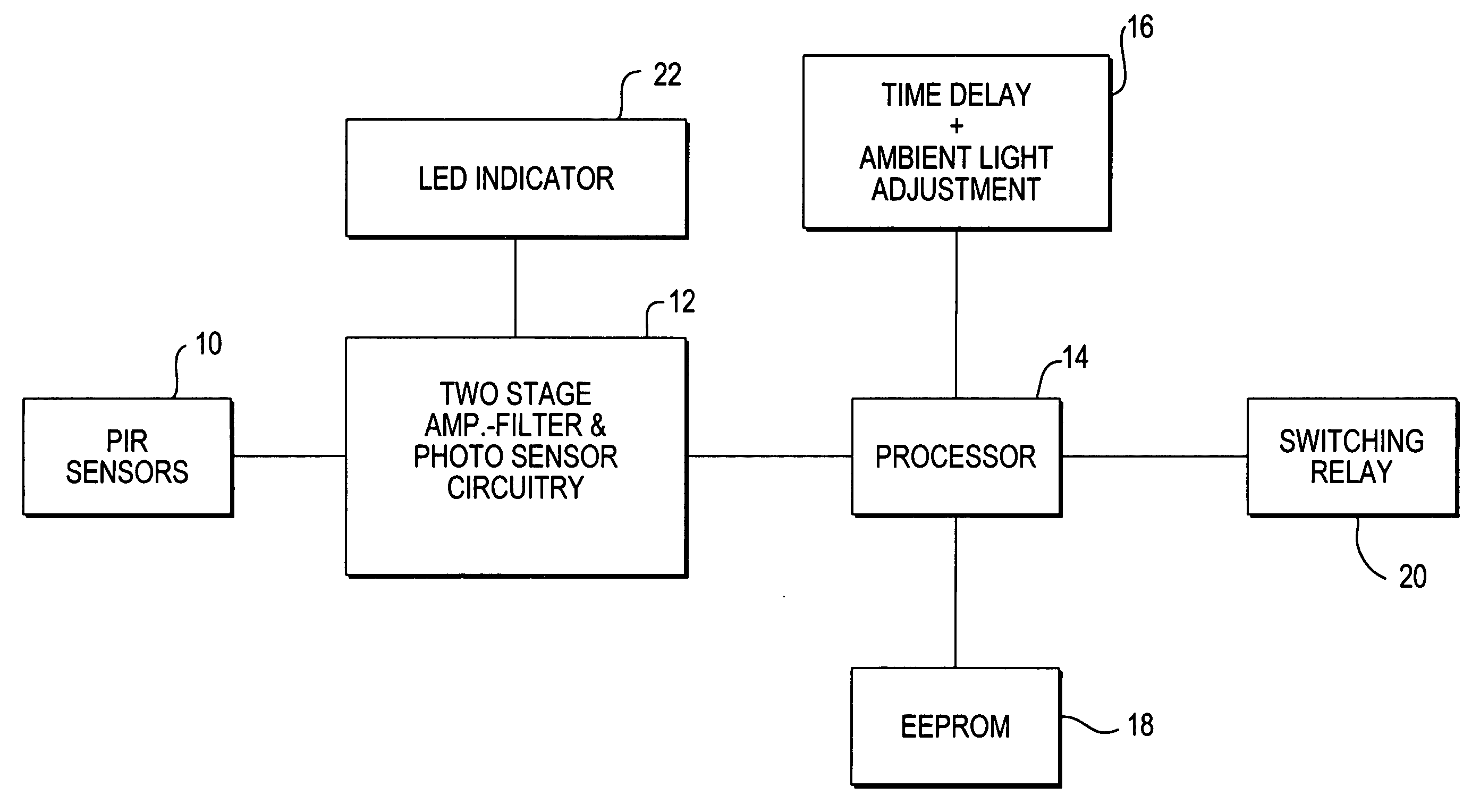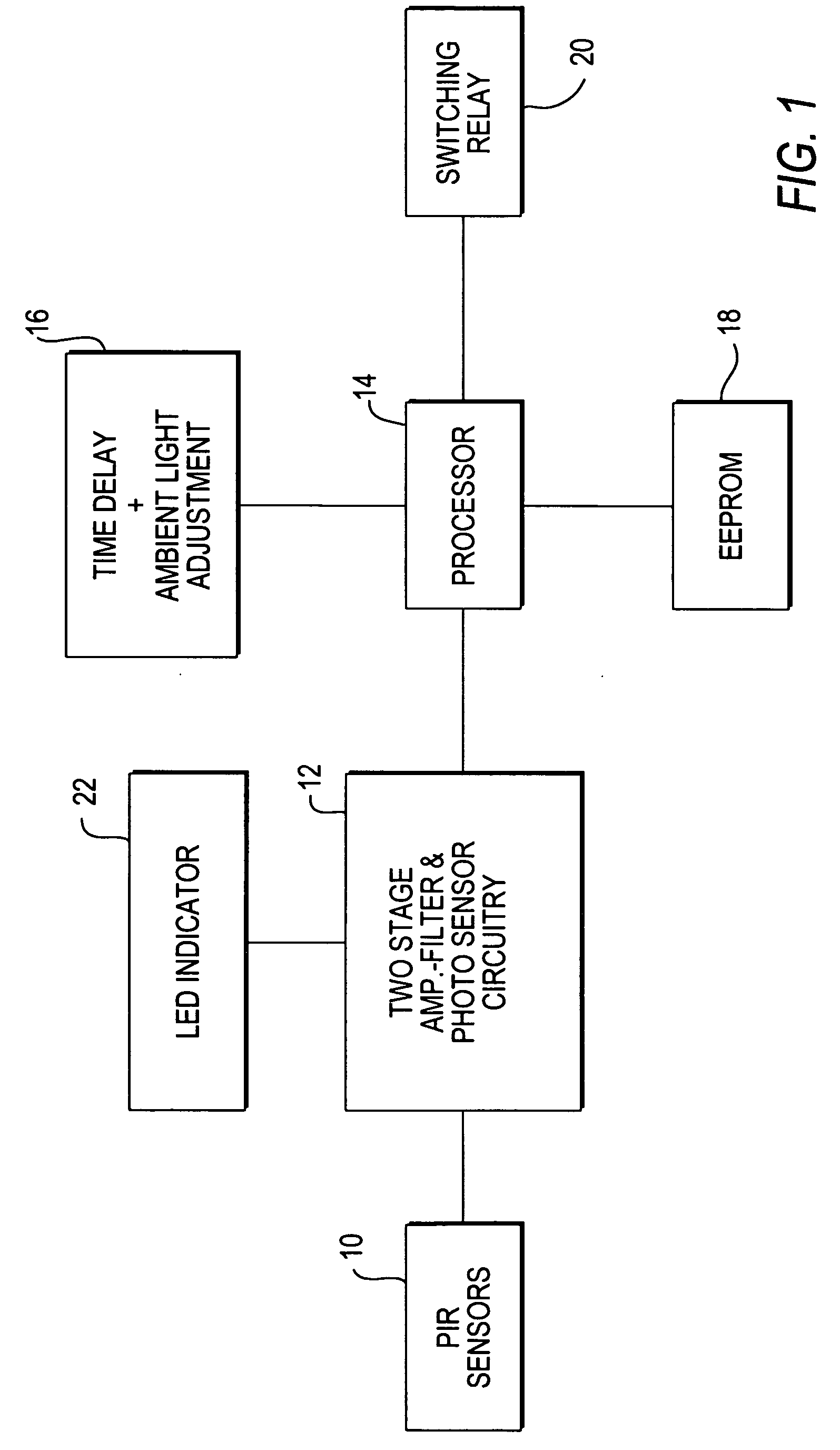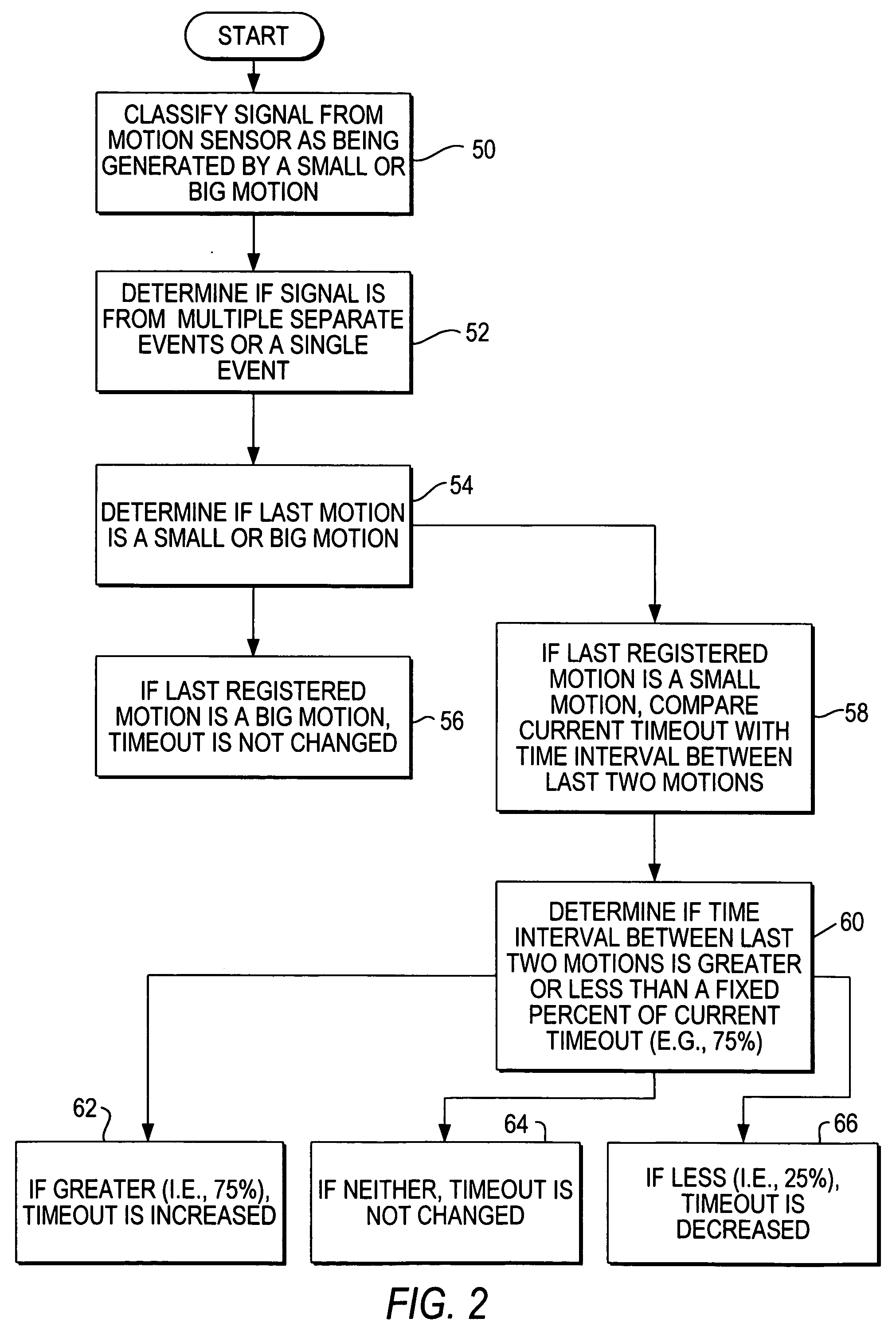Passive infrared motion sensor
a motion sensor and infrared technology, applied in the field of light control, can solve the problems of not being able to optimally control the lighting in the room, automatically off the lights in the room, etc., and achieve the effect of reducing energy consumption and short timeou
- Summary
- Abstract
- Description
- Claims
- Application Information
AI Technical Summary
Benefits of technology
Problems solved by technology
Method used
Image
Examples
Embodiment Construction
[0014] In the following description of the exemplary embodiment, reference is made to the accompanying drawings which form a part hereof, and in which is shown by way of illustration the specific embodiment in which the invention may be practiced. It is to be understood that other embodiments may be utilized as changes may be made to the structure and / or method without departing from the scope of the present invention.
[0015] A problem with PIR occupancy sensors connected to electrical circuits used to control the lights in an area such as an office or a room is that the PIR sensors generate a signal for a set interval of time when the IR radiation level changes as a result of movement by an occupant, and then only if the movement is sufficient to be registered by the sensor. Present day PIR occupancy sensors used to control the lights in a room usually have a time delay that is large enough to cover the interval between two successive movements which can be registered by the sensor...
PUM
 Login to View More
Login to View More Abstract
Description
Claims
Application Information
 Login to View More
Login to View More - R&D
- Intellectual Property
- Life Sciences
- Materials
- Tech Scout
- Unparalleled Data Quality
- Higher Quality Content
- 60% Fewer Hallucinations
Browse by: Latest US Patents, China's latest patents, Technical Efficacy Thesaurus, Application Domain, Technology Topic, Popular Technical Reports.
© 2025 PatSnap. All rights reserved.Legal|Privacy policy|Modern Slavery Act Transparency Statement|Sitemap|About US| Contact US: help@patsnap.com



